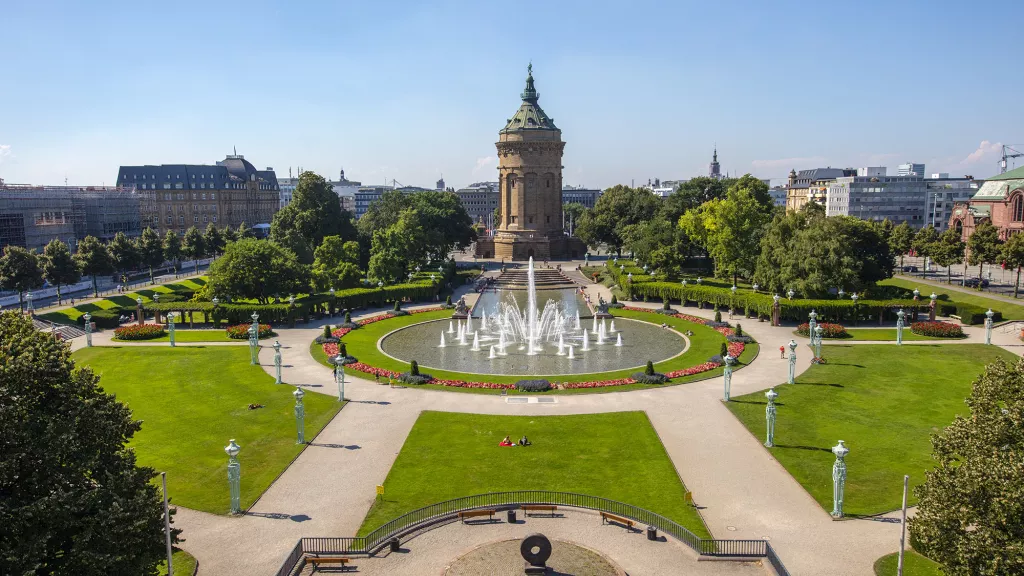Culture, shopping and a large park
Mannheim's horseshoe-shaped city center was laid out in a grid - the "Mannheim Squares". The planning of this grid goes back to Elector Frederick IV of the Palatinate around 1600 and has been preserved until today.
Mannheim Castle was the residence of the Electors of the Palatinate. Built between 1720 and 1760, it is the largest enclosed Baroque complex in Europe after Versailles and today houses historical exhibits and the university.
With the National Theater known as the Schiller Stage (Friedrich Schiller's drama "The Robbers" premiered in the poet's presence on January 13, 1782), the Kunsthalle (art gallery), the Reiss-Engelhorn Museums and the Technoseum (state museum for technology and labor), Mannheim is a theater and museum location known beyond the region. The SAP Arena is the home venue for the Mannheim Eagles (Ice Hockey) and the Rhein-Neckar Lions (Handball) as well as a stage for concerts by all the great artists of our time.
The promenade "Planken" with many restaurants and stores leads from the Paradeplatz to the Romanesque water tower, the city's landmark, on the Friedrichsplatz with its Art Nouveau elements.
If you want to get an overview, we recommend the 200m high telecommunications tower with a viewing platform at 121m and a revolving restaurant just above. At the foot of the tower is the Luisenpark with a lake stage, Chinese garden and leisure activities for all generations. A tip: A boat trip with the Gondolettas in the Luisenpark is the perfect way to slow down.
We have linked more information about the city of Mannheim here.
